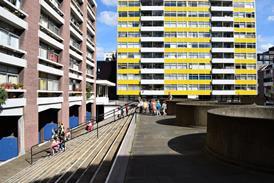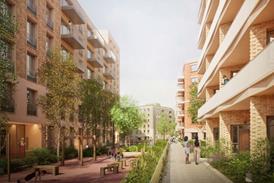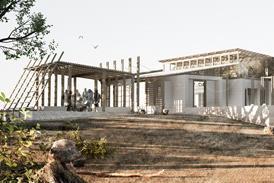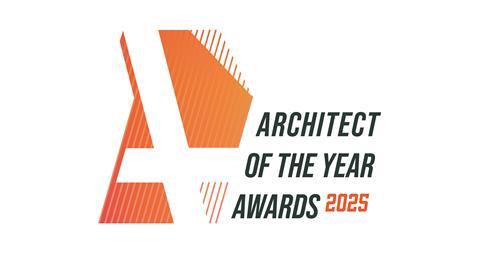Mitakshi Sirsi reflects on the fragility exposed by recent global events and outlines five strategies for embedding long-term value and ecological responsibility in built environment practice

It is a strange time to be building buildings. The back-and-forth of tariffs and global agreements, policy changes across the pond, rising geopolitical conflicts, and economic unpredictability have affected global logistics, which are in turn affecting construction in varied ways. While each new project now carries increased financial risk, crucially, it also bears significant ecological and social weight.
And yet, we keep building. The sprawl still crawls, and the cranes rarely pause to reconcile their pace with the needs of the planet they build on, or the people they build for.
As the group sustainability director at Broadway Malyan, and a professional with cross-continental experience in design, sustainability, and policy, I have recently been reflecting on the shifting forces currently shaping parts of our industry and the sustainability challenges that accompany them.
The construction landscape has been increasingly strained in the past few months. New tariffs (and trackbacks) from the US have sparked volatility in material prices, especially in steel and aluminium; and the delays in material access have disrupted timelines and budgets.
Persistent labour shortages are now exacerbated by the looming possibility of increased conflict in the subcontinent - where a substantial part of the West’s construction workforce is sourced - not to mention the scale of human impact this carries. This places immense strain on the carbon and sustainability ambitions of the sector, which are deeply entrenched within these supply chain disruptions.
In parallel, the US’s threatened re-withdrawal from the Paris Agreement reflects a broader decline in coordinated global climate finance, including from the UK, diluting targets and weakening or dismantling programmes such as the Green Cities Programme and others supporting sustainable development in rapidly urbanising parts of the world. In developing economies, construction activity is increasing to unprecedented levels to accommodate growing urban populations.
This trend of diluting climate aid means further delays in the mainstreaming of climate-conscious design and policy, with lasting negative impacts on urban communities. Admittedly, there is a wide variation in regional approaches, such as those the Broadway Malyan team in Singapore are seeing, with local policies doubling down on sustainability mandates, while others remain unable to respond to the damage caused by continued business-as-usual practices.
The scale of today’s ecological, economic and geopolitical crisis can leave us overwhelmed
Similarly, in the real estate world, the rollback of climate disclosure rules by the SEC, along with the removal of ESG investment requirements for U.S. pension funds, signals a broader shift in power away from the institutional investors with sustainability-focused goals. We have seen rapid weakening of corporate ambition in recent weeks, and momentum behind ESG-driven property investment is slowing.
Private developers and asset managers now face reduced incentives to invest in sustainable buildings, net zero portfolios, biodiversity improvement or climate-resilient assets – a missed opportunity just where we need more decisive action.
Architects might wonder what all this has to do with their work - a workplace building being delivered in town or the regeneration project in the Midlands that they bid on last week. One might ask - why zoom out so much when the local sustainability work still needs doing? Because the forces pushing these global shifts are the very ones shaping decisions on your project – the global policy signatures are no longer an abstract. The ripples caused by them manifest in tangible ways, embedded in your brief or specifications - in the low-carbon structural steel, the overbudget façade system, or the social value weighting reduced in your next bid.
As an example – your mixed-use project with BREEAM Excellent, LETI carbon and EUI targets faces a sudden spike in steel prices. The contractor suggests a cheaper, uncertified alternative, threatening embodied carbon goals. Simultaneously, labour shortages bring delays and reduce oversight quality, affecting the façade, and consequently, operational energy performance.
Your client withdraws some voluntary measures from the brief, which includes local community allotments and biodiversity enhancements. What began as a local, community-focused, sustainability-led regeneration project has now tossed out long-term value creation for the community and ecology as global forces now influence the design and delivery choices.
The scale of today’s ecological, economic and geopolitical crisis can leave us overwhelmed, but perhaps there is a silver lining – a chance to reset? Let us first acknowledge that global uncertainty is not a temporary disruption and will continue to challenge our established linear pathways to sustainable design.
Resilience is built with intention, not by accident
We should learn to treat the uncertainty as the lens through which we shape our response to the crisis. We have a chance to drive regional leadership through deliberate, diversified, de-risked and decentralised actions in our projects, and foster a design culture that is adaptive, regenerative and responsive to volatility.
But how do we do this in practice? The five points below reflect my early efforts to rethink our approach to design, contracts, delivery, and the narratives we use to support decision-making. They are shared here to prompt dialogue and invite further contributions from colleagues.
Resilience is built with intention, not by accident – integrate climate and ecological risk early, empower early-stage sustainable decision-making by front-loading contracts to allow for adequate time, resourcing and capacity building. This will strengthen resilience planning and is also critical for navigating increasing insurance, regulatory, and asset-level climate risks. Use data tools, such as climate risk mapping to whole-life carbon modelling, to support informed performance-led design decisions.
Shift from demolition and improve design and delivery skills in deep retrofit – retaining existing buildings where feasible minimises embodied carbon, avoids procurement of new materials from volatile markets, and reduces construction time and costs.
Elevate the design value of longevity, adaptability and efficiency beyond BREEAM credits – designing for flexibility and durability provides long-term value and reduces lifecycle costs. Use materials passports and digital tools to track and plan for reuse, enabling future adaptability and resource recovery. Similarly, passive-first design should be standardised, not just for SAP calculations or as a “green” aspiration, but as a strategy for operational resilience and energy security.
Recent global events have once again exposed the fragility of our ways of working in the construction industry
Transform contracts and procurement models as enablers for sustainability delivery, not outcomes themselves. Advocate for integrated delivery methods (IPD) and models that support collaboration and shared accountability, and early contractor involvement.
Reimagine supply chain strategies and design for circularity, resource efficiency, and local and alternative materials – this is essential in light of disrupted global logistics and offers opportunities to build regional circular economy capacity. As a requirement in briefs and contractor scopes, starting with items such as furniture or insulation, circular material loops can enable local social and economic benefits, reduce dependency on volatile material markets, enhance predictability and help manage both cost and carbon performance.
Ultimately, diversification and de-risking are not just economic strategies – they are design strategies as well, and we must treat them as such. They require technical foresight, social inclusion, robust governance, and feedback mechanisms to ensure that outcomes are delivered, measured, and continuously improved.
The above is not a call to optimism – while challenging to action, none of the ideas presented here are radical. They have been long advocated for by leaders in sustainability, proving that the systemic issues to dismantle are more complex than just tariffs or ESG retractions, even if those are significant. Recent global events have once again exposed the fragility of our ways of working in the construction industry, and in the exposing of this fragility, we may finally have the momentum we need to embed systemic shifts more deeply in our ways of working.
This is a call for pragmatism. I believe we must act urgently, but without presuming it will lead to meaningful progress. Because sometimes the soothing light at the end of the tunnel is a freight train coming your way – but maybe we go toward it anyway, eyes open, aware, and more resilient than yesterday?
>> Also read: Are the culture wars distracting us from architecture’s real challenges?
>> Also read: Architecture and the ethics of harm: design, responsibility, and the cost of inaction
Postscript
Mitakshi Sirsi is group sustainability director at Broadway Malyan
















No comments yet